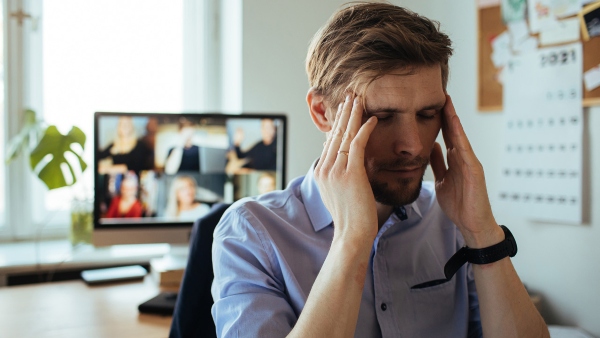There is a new concept such as “Zoom fatigue” which researchers have developed to help explain why zoom meetings are so dreadful.
The Fatigue Is Real!
One of the reasons supposed by the researchers at Stanford is the constant self-evaluation. In classes or in professional meetings, participants are expected to keep their videos turned on. This leads to people constantly evaluating how they look by continuously looking at themself in the reflection.

For women, this is believed to be even higher per cent. When an individual is self-evaluating hours on end in a day, the fatigue, as opposed to in-person meetings, is far greater.
The Settings Are Restricted
We are sure by now you have also attended your fair share of Zoom meetings. Doesn’t it break your back and behind when you have to sit continuously for hours on end? Students usually have consecutive classes for up to 4 hours with no option to get up and roam around.
This is also believed to be causing the “Zoom fatigue”. Compared to the “in-person life”, we can not talk and walk which makes the experience more drudging and draining.

The difficulty of Detecting Body Language

In virtual meetings, whoever is speaking can not detect the body language of others which creates more stress. Suppose you are pitching an idea in person, by detecting the body language of your audience you can modify your pitch. The ultimate result? A decent effort.
However, on Zoom, you don’t know whether your audience is bored to death or intrigued to the maximum which makes people more nervous, hence more tired.
The Screen Size
When many of us join Zoom calls, the screen of the meeting usually spans over the entire Laptop or even TV depending on what you like. Researchers and psychologists have also pinned this down as one of the reasons for the “Zoom fatigue”.

With a large screen, your eyes are constantly moving back and forth looking at a range of people simultaneously. This can strain your eyes more, make you feel more flustered and keep you constantly distracted.
In an alternate setting, you only looked at the person speaking which reduced all these negative effects.
What Do We Do?
If you identify with all of the reasons above and seek a solution, here’s your answer. Researchers at Stanford have suggested you turn your camera off from time to time when you are not engaging. Reduce the screen size of the Zoom screen. Do not let your screen show to yourself when you have your camera on. Walk around the room and talk with your camera off when need be.
Hopefully, these tips will help us remain sane until the winds of the pandemic blow over.
Stay tuned to Brandsynario for the latest news and updates.







































